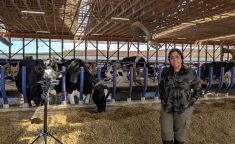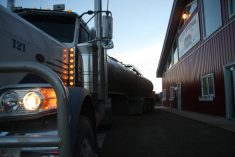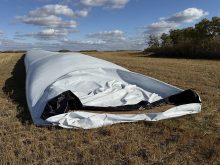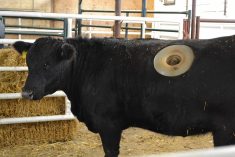Dean Hubbard found the process of getting his 4R designation was pretty easy.
The secret? He was already using all the recommended practices for making the most effective use of fertilizer while minimizing environmental impact.
“I ran down a checklist and they said I had my 4R designation,” said the Claresholm farmer. “I didn’t even know it was a thing. It was pretty simple to accomplish.”
Read Also

Moo translator and methane measures: There’s an app for that
Dalhousie University researchers use artificial intelligence to create new dairy farm apps that analyze cattle sounds and measure methane.
Fertilizer Canada, which administers the designation program, wants more producers to follow in Hubbard’s footsteps. It says 25 million acres are being farmed under 4R principles (right source, right rate, right time and right place) but only 9.6 million (about a third of them in Alberta) have been officially designated as such.
The organization’s goal is to have 15 million acres across the country under that designation by 2025, a target that an official calls “conservative.”
“We still have a ways to go but I think a lot more growers are operating under these principles than we’re currently accounting for,” said Cassandra Cotton, Fertilizer Canada’s vice-president of policy and programs.
“We’re not starting at ground zero. It’s a great start but we have a long way to go.”
Getting the 4R designation is an important part of showing that farmers are good stewards, said Cotton.
“More and more today, growers are facing some scrutiny around how products are being grown and consumers are demanding proof of sustainability,” she said.
“We have a federal government very focused on reducing GHG emissions from fertilizer application. We know lots of growers are implementing these practices, so to be able to showcase it in some way and actually communicate it, I think there’s an inherent benefit from a financial standpoint.”
Hubbard agrees.
“Federally they’ve asked us to meet these (emissions) targets by 2030,” he said. “They’re saying right now it’s all voluntary. But if we don’t provide some proof in 2030 that we’re doing it, does the carrot become a stick?
“Do they then start saying ‘OK, you weren’t willing to participate voluntarily so now you will reduce your fertilizer use?’ That would be my concern.”
Along with improving the efficiency of fertilizer use and other benefits, 4R practices reduce runoff, which Hubbard is particularly passionate about.
“4R nutrient stewardship is one way to really help continue with a good, safe water supply,” he said.
The designation program is free but requires the assistance of an accredited crop advisor or professional agrologist. Some agri-retailers may have people with 4R designation on their staff for farmers who don’t already employ one, said Cotton.
“The advisor works with the grower customers to formulate a 4R plan,” she said. “They also aggregate the designated acres and report them to Fertilizer Canada.”
When producers develop a plan, they agree to implement it to the best of their ability, said Cotton. There’s some leeway in terms of time, but ultimately their acres aren’t designated until they’ve fulfilled the goals outlined in their plans.
“Things happen,” she said. “Maybe planning doesn’t work out but what we’re looking at is they have developed a plan and implemented it to the best of their ability.
“There’s a second-year follow-up when the grower talks to their advisor about what happened last year and what they’re going to change. So it’s kind of a continued conversation.”
Cotton said she understands why a producer might not want to become designated, especially if they don’t already employ 4R practices or are missing a crucial and possibly time-consuming or expensive practice.
“Some more advanced practices are known to take a longer time to see the return on investment,” she said. “There are very different costs for the grower if you’re investing in enhanced efficiency fertilizer or upping your amount of soil testing versus investing in banding equipment.”
But if, like Hubbard, they are already following all 4R practices, the process should be relatively quick and easy, she added.
“If there are any that are operating at a high level of nutrient management, the time investment in terms of participating in the designation program is extremely minimal.”
















